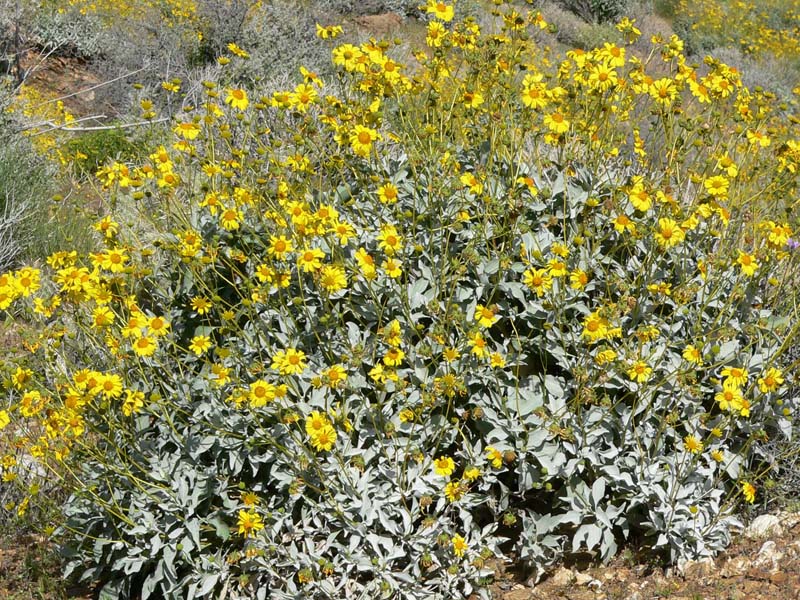Brittlebush–a widespread and very drought-resistant woody shrub with bright yellow flowers–is one of the most conspicuous desert plants when in bloom from late winter to mid-spring. During really dry, hot years with little soil moisture, their green leaves can appear almost white because they are covered with soft, matted “hairs” that helps deflect the sun’s harsh rays; sort of like a sunscreen.
In fact, the hotter and drier the growing season, the smaller and whiter are the leaves produced. Smaller leaves transpire (lose) less water and the denser the leaf-hairs, the better the sun protection. During prolonged droughts, they will lose their leaves entirely and forgo flowering to conserve water and survive. Even in wetter years, you might also notice that there are few wildflowers growing with them. To compete for space and limited water, when it rains, seed germination-inhibiting chemicals leach out of Brittlebush leaves and into the soil so that few species of annual wildflowers can grow under them. Another amazing example of desert plant adaptations that enable them to compete for limited resources in a challenging environment.
Source: A Natural History of the Sonoran Desert, 2015. Available in the Garden Shop and Schilling Library.

